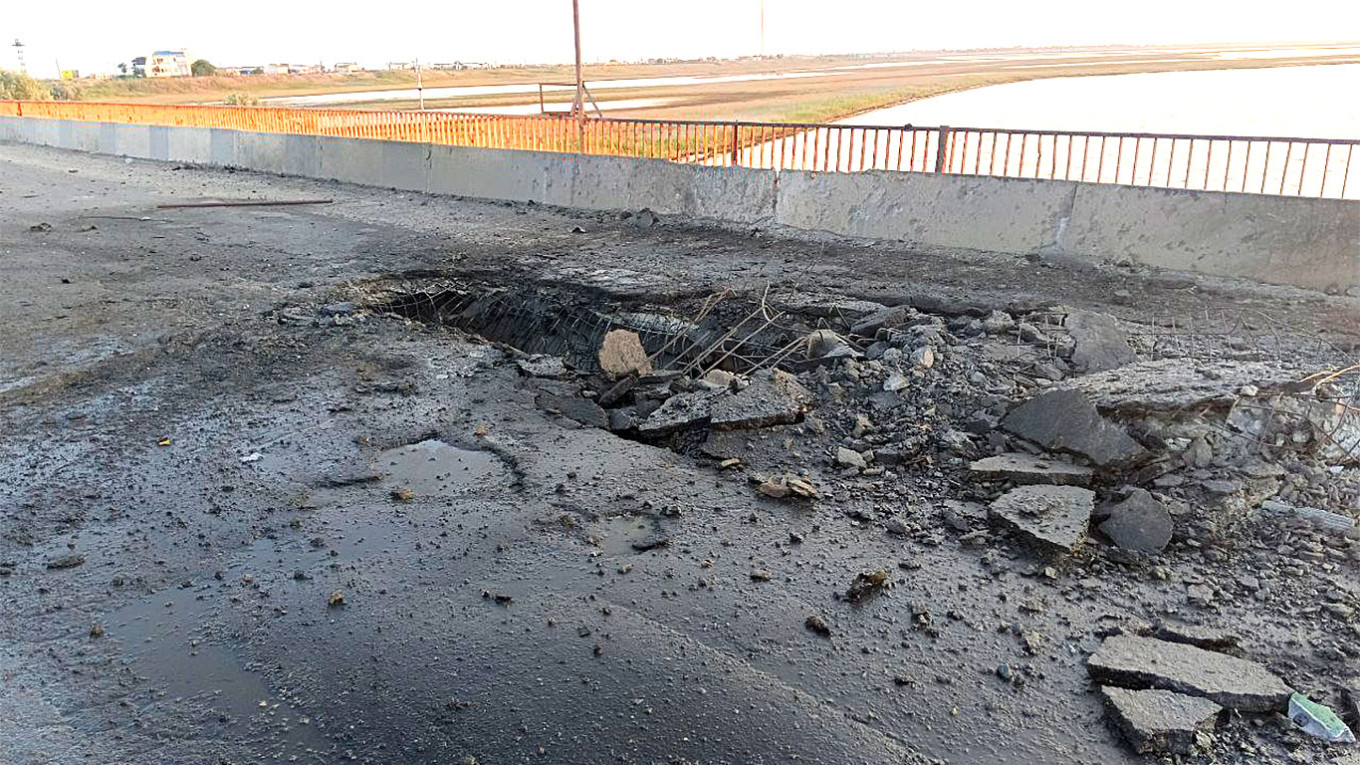Kyiv's Strikes Disable Key Bridges in Western Russia

The targeted bridges are located near the border of Ukraine and are vital for the movement of Russian military equipment and personnel. The destruction and damage of these bridges represent a significant strategic blow to Russian forces, potentially hindering their ability to reinforce and resupply troops in contested areas.
While Russian authorities have acknowledged the strikes, the extent of the damage remains unclear. Some reports suggest that one of the bridges has been completely destroyed, while the other two have suffered varying degrees of damage. This has led to disruptions in the region, as military and civilian movements are severely affected.
Ukrainian officials have not officially commented on the strikes, adhering to their policy of strategic ambiguity regarding operations on foreign soil. However, the attacks align with Kyiv’s broader strategy of targeting infrastructure that supports Russian military activities. This approach aims to weaken Russia’s logistical capabilities and stretch its resources, especially in the contested border regions.
The Seym River bridges are critical for Russian operations in the western part of the country. By disabling these crossings, Ukrainian forces have created significant logistical challenges for Russian troops. The impact of these strikes may force Russia to divert resources and seek alternative routes for transportation, potentially slowing down their military campaigns.
This development is part of a larger pattern of Ukrainian strikes targeting infrastructure in Russian-controlled territories. Over the past few weeks, similar attacks have been reported, including the destruction of supply depots, railways, and other key facilities. These operations reflect a shift in Ukrainian tactics, focusing on disrupting Russian logistics rather than engaging in direct confrontations.
The ongoing conflict between Russia and Ukraine has seen both sides employing various strategies to gain an upper hand. For Ukraine, disrupting Russian supply lines and infrastructure has become a central aspect of its military operations. This approach is designed to weaken Russian forces incrementally, making it more difficult for them to sustain prolonged engagements.
As the conflict continues, the destruction of the Seym River bridges may signal a new phase in the war, where infrastructure becomes a primary target. The implications of this shift are significant, as it could lead to further destabilization in the region and complicate any efforts at de-escalation.
In response to the strikes, Russian officials have vowed to repair the damaged bridges and strengthen defenses in the area. However, the challenges of repairing infrastructure under conflict conditions may prove difficult, especially if Ukrainian forces continue to target such facilities.
The situation on the ground remains fluid, with both sides adjusting their strategies in response to the evolving battlefield dynamics. The damage to the Seym River bridges is likely to have a lasting impact on the conflict, influencing the movement of troops and supplies in the coming weeks.
This latest development underscores the complexity and intensity of the conflict, as both Russia and Ukraine continue to engage in a war of attrition. The targeting of infrastructure like the Seym River bridges illustrates the lengths to which both sides are willing to go in pursuit of their objectives, with civilian and military infrastructure increasingly caught in the crossfire.
As the war progresses, the focus on infrastructure may intensify, with both sides seeking to exploit vulnerabilities in each other’s logistical networks. The outcome of these efforts could play a crucial role in determining the future course of the conflict.

Join the conversation